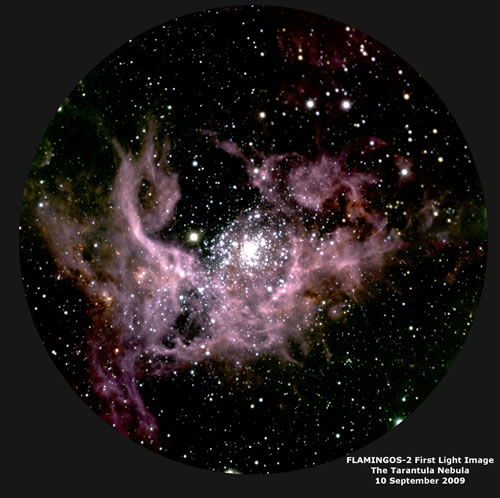We’ve been thinking about ways to improve the instrument development process at Gemini lately, so I started to think about our management style- matrixed or functional? ….
Gemini describes itself as a matrix management organization – where cross-divisional project teams lead and complete their projects together. This approach is in contrast to one of functional management, where divisions take care of their own projects, communicating with other divisions through their Heads, only when necessary. In the matrix management case, employees are functionally managed by their Division head, but operationally, they report to multiple project managers as well. In the functional management case, employees report to their Division heads and inter-divisional coordination happens at the management level only. Management is functional, not operational.
While most Gemini internal projects employ resources from more than one functional area, suggesting a more natural matrix-management model, they are in fact managed quite functionally. Requests for exo-divisional resources are made in the planning process, approved by Division heads, while task management and project definition are often separated along divisional boundaries. Projects like new instrumentation get divided up into Development (deliver an instrument to the Observatory from the vendor), Engineering (prepare Gemini to receive the instrument and manage acceptance testing), and Science (prepare Gemini to operate the instrument and manage commissioning). Non-Development resources are being assigned to Development projects, but their tasks are often being managed by their functional division, not by the project. To me, what I just described is functional, not matrix, management.
To be fair, Gemini’s approach is at least partially matrixed. Development, for example, does employ one software division employee, functionally managed by software, but project/operationally managed by Development. When Development made this change, we immediately improved our ability to make our software deliveries. A contrary example, however, is the software integration of Flamingos-2, which was successfully handled in a more functional style.

First light image from Flamingos-2 at Gemini South.
One strength of our apparent functional approach is it gives ownership and accountability of each aspect of the project to the division doing most of the work. One disadvantage is there is no one person or division accountable to the Director for the project’s overall success. Another disadvantage is that where there are boundaries and hand-offs, there are often miscommunications and unclear procedures. Finally, any internal expertise gained by the first division in a project is essentially lost when the project is handed over to the next division.
If we really are to become a matrix-managed organization, we need to start breaking down the barriers that exist between divisions and increase communication between project managers and Division heads. Although individual project managers may not have the hierarchical authority to command resources external to their own division, they share a common goal within the Observatory to have a successful project and can realize this success by involving division heads and assigned resources in forming their project plans. If a single person is held accountable for the success of each project, it is up to that that individual to obtain the needed resources, or go back to the Division head for help, if necessary.
In a true matrix-managed Gemini, resources assigned a project would report to their own Division head for functional support, but to their project managers for operational support. Meanwhile, project managers should hold regular status meetings with their stakeholders, including the relevant external Division heads and managers. These meetings and progress reports will help the external managers feel comfortable that their resources are being properly employed and build ownership for the overall success of the project across the Observatory.
Gemini can become an effective matrix-managed organization if it wants to – simply by holding project managers accountable for their project’s success, and increasing communication and involvement between divisional and project managers. We have to start thinking and working like a team and not like a collection of divisions unwilling to pin our own success on that of another.
Flamingos-2 is a multiple object near-infrared imager and spectrograph now undergoing final on-telescope commissioning at Gemini South. Its integration into Gemini has gone very well and is a testament to the hard work and dedication of both the University of Florida team, and Gemini Engineering and Science staff. The first light images are stunning and Flamingos-2 will only get better when Gemini’s Multi-Conjugate Adaptive Optics system gets installed in the coming coming years at Gemini South.
Please see my standard disclaimer in the About page.
